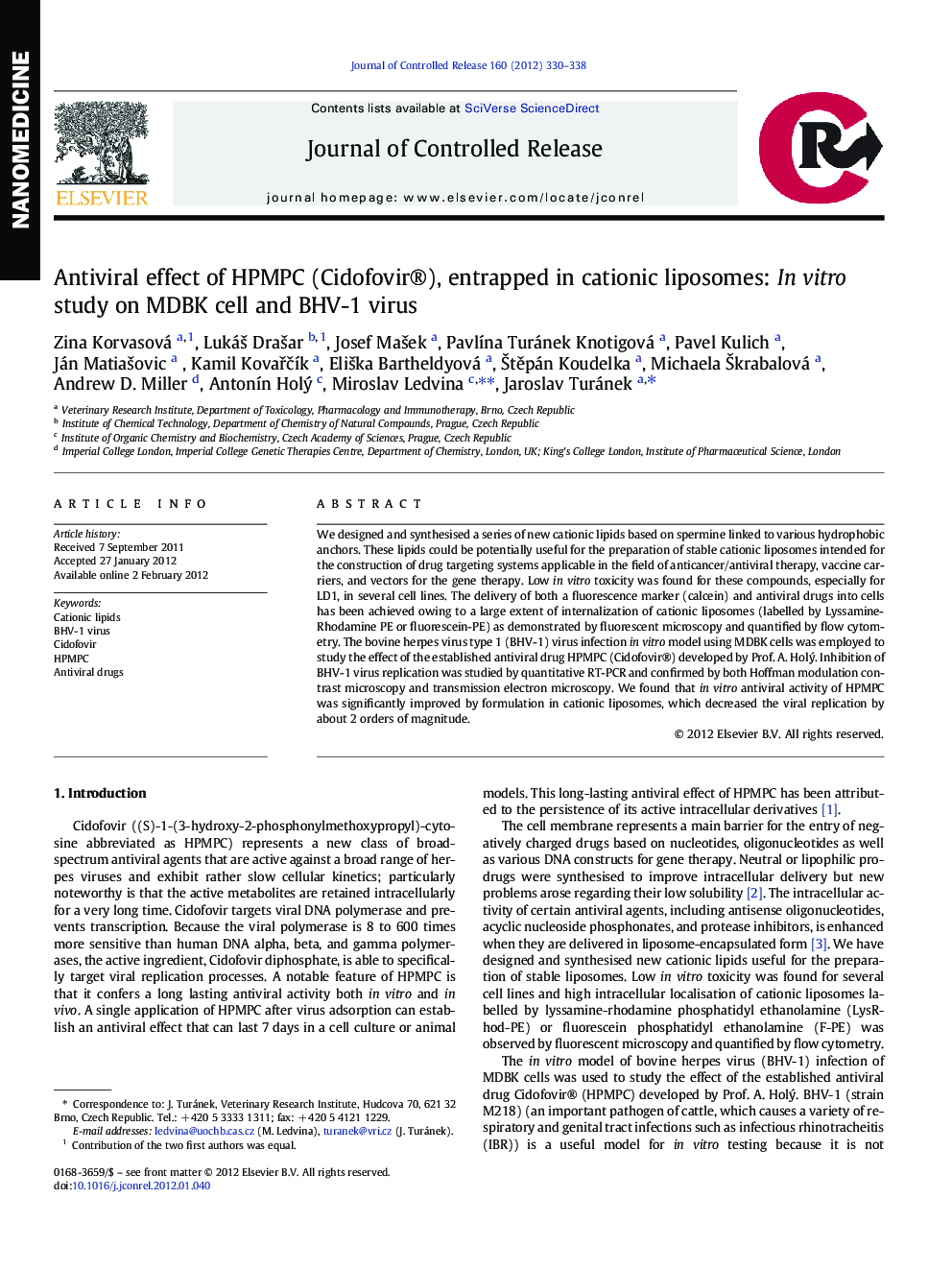| Article ID | Journal | Published Year | Pages | File Type |
|---|---|---|---|---|
| 1424632 | Journal of Controlled Release | 2012 | 9 Pages |
We designed and synthesised a series of new cationic lipids based on spermine linked to various hydrophobic anchors. These lipids could be potentially useful for the preparation of stable cationic liposomes intended for the construction of drug targeting systems applicable in the field of anticancer/antiviral therapy, vaccine carriers, and vectors for the gene therapy. Low in vitro toxicity was found for these compounds, especially for LD1, in several cell lines. The delivery of both a fluorescence marker (calcein) and antiviral drugs into cells has been achieved owing to a large extent of internalization of cationic liposomes (labelled by Lyssamine-Rhodamine PE or fluorescein-PE) as demonstrated by fluorescent microscopy and quantified by flow cytometry. The bovine herpes virus type 1 (BHV-1) virus infection in vitro model using MDBK cells was employed to study the effect of the established antiviral drug HPMPC (Cidofovir®) developed by Prof. A. Holý. Inhibition of BHV-1 virus replication was studied by quantitative RT-PCR and confirmed by both Hoffman modulation contrast microscopy and transmission electron microscopy. We found that in vitro antiviral activity of HPMPC was significantly improved by formulation in cationic liposomes, which decreased the viral replication by about 2 orders of magnitude.
Graphical abstractFigure optionsDownload full-size imageDownload high-quality image (259 K)Download as PowerPoint slide
